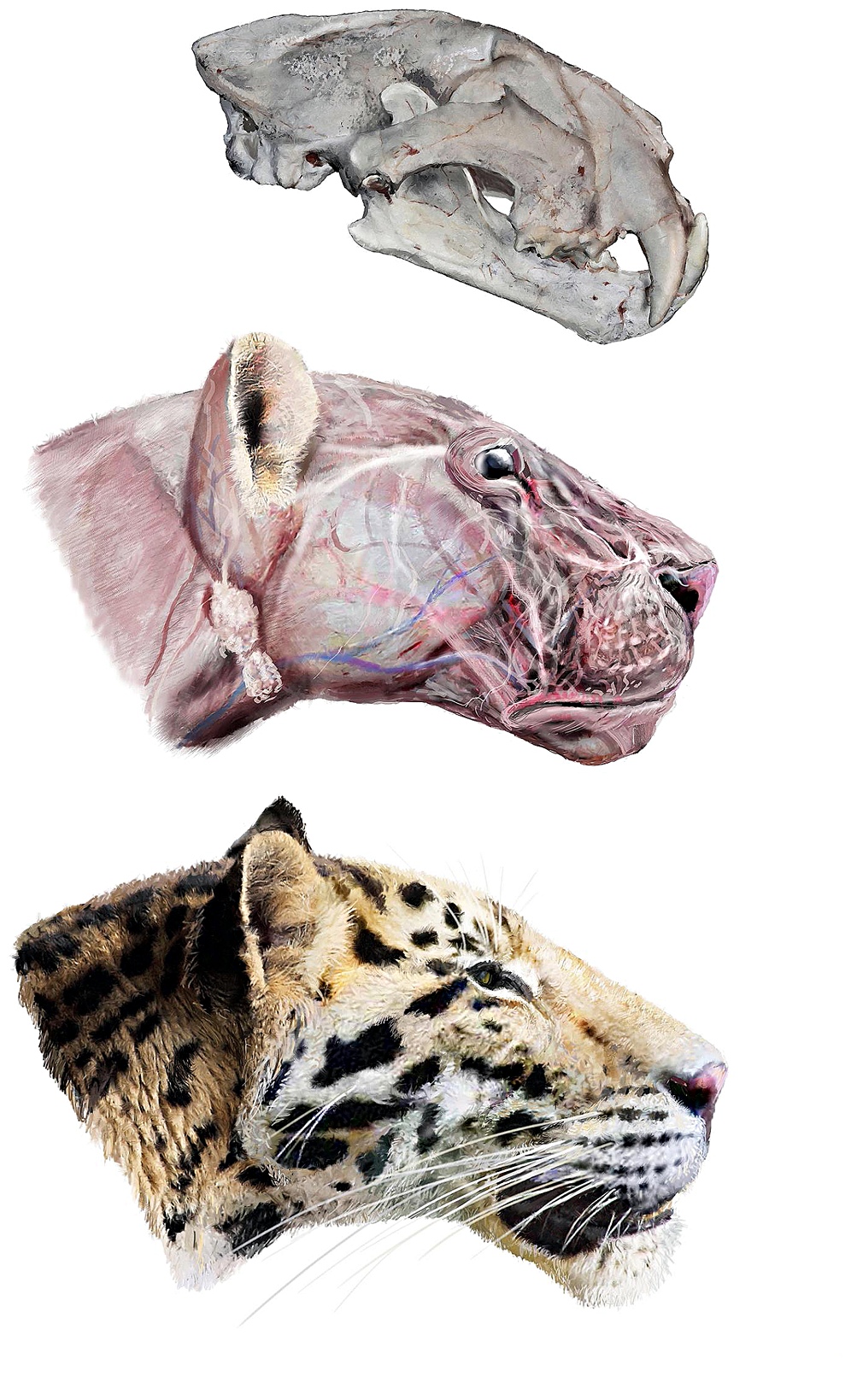|
Panthera Zdanskyi
''Panthera zdanskyi'', also known as the Longdan tiger, is an extinct pantherine species that is seen as a close relative of the modern tiger. Fossils were excavated in northwestern China's Gansu province. Etymology ''Panthera zdanskyi'' was first named by Ji H. Mazák, Per Christiansen and Andrew C. Kitchener in 2011. The specific name honors the Austrian paleontologist Otto A. Zdansky for his contributions to the understanding of Neogene Chinese fossil carnivorans. Description The holotype of ''Panthera zdanskyi'' consists of a nearly complete skull and mandible stored at the Babiarz Institute of Paleontological Studies. It is the oldest known complete pantherine skull ever found, and indicates that the animal was about the size of a jaguar. The paratype comprises a rostrum, premaxilla and maxilla and much of the dentition, originally referred to ''Panthera palaeosinensis''. It was collected in 2004 in the east slope of Longdan, south of Dongxiang Autonomous County in the L ... [...More Info...] [...Related Items...] OR: [Wikipedia] [Google] [Baidu] |
Early Pleistocene
The Early Pleistocene is an unofficial sub-epoch in the international geologic timescale in chronostratigraphy, being the earliest division of the Pleistocene Epoch within the ongoing Quaternary Period. It is currently estimated to span the time between 2.580 ± 0.005 Ma (million years ago) and 0.773 ± 0.005 Ma. The term Early Pleistocene applies to both the Gelasian Age (to 1.800 ± 0.005 Ma) and the Calabrian Age. While the Gelasian and the Calabrian have officially been defined by the International Union of Geological Sciences (IUGS) to effectively constitute the Early Pleistocene, the succeeding Chibanian and Tarantian ages have yet to be ratified. These proposed ages are unofficially termed the Middle Pleistocene and Late Pleistocene The Late Pleistocene is an unofficial Age (geology), age in the international geologic timescale in chronostratigraphy, also known as Upper Pleistocene from a Stratigraphy, stratigraphic perspective. It is intended to be the fourth div ... [...More Info...] [...Related Items...] OR: [Wikipedia] [Google] [Baidu] |
Paratype
In zoology and botany, a paratype is a specimen of an organism that helps define what the scientific name of a species and other taxon actually represents, but it is not the holotype (and in botany is also neither an isotype nor a syntype). Often there is more than one paratype. Paratypes are usually held in museum research collections. The exact meaning of the term ''paratype'' when it is used in zoology is not the same as the meaning when it is used in botany. In both cases however, this term is used in conjunction with ''holotype''. Zoology In zoological nomenclature, a paratype is officially defined as "Each specimen of a type series other than the holotype.", ''International Code of Zoological Nomenclature'' In turn, this definition relies on the definition of a "type series". A type series is the material (specimens of organisms) that was cited in the original publication of the new species or subspecies, and was not excluded from being type material by the author (th ... [...More Info...] [...Related Items...] OR: [Wikipedia] [Google] [Baidu] |
Panthera Uncia
The snow leopard (''Panthera uncia''), also known as the ounce, is a felid in the genus ''Panthera'' native to the mountain ranges of Central and South Asia. It is listed as Vulnerable on the IUCN Red List because the global population is estimated to number fewer than 10,000 mature individuals and is expected to decline about 10% by 2040. It is threatened by poaching and habitat destruction following infrastructural developments. It inhabits alpine and subalpine zones at elevations of , ranging from eastern Afghanistan, the Himalayas and the Tibetan Plateau to southern Siberia, Mongolia and western China. In the northern part of its range, it also lives at lower elevations. Taxonomically, the snow leopard was long classified in the monotypic genus ''Uncia''. Since phylogenetic studies revealed the relationships among ''Panthera'' species, it has been considered a member of that genus. Two subspecies were described based on morphological differences, but genetic differences b ... [...More Info...] [...Related Items...] OR: [Wikipedia] [Google] [Baidu] |



